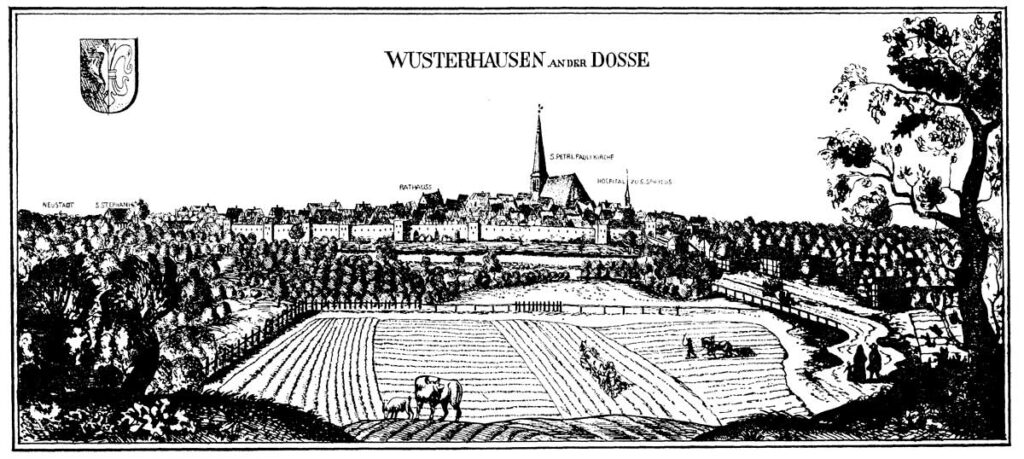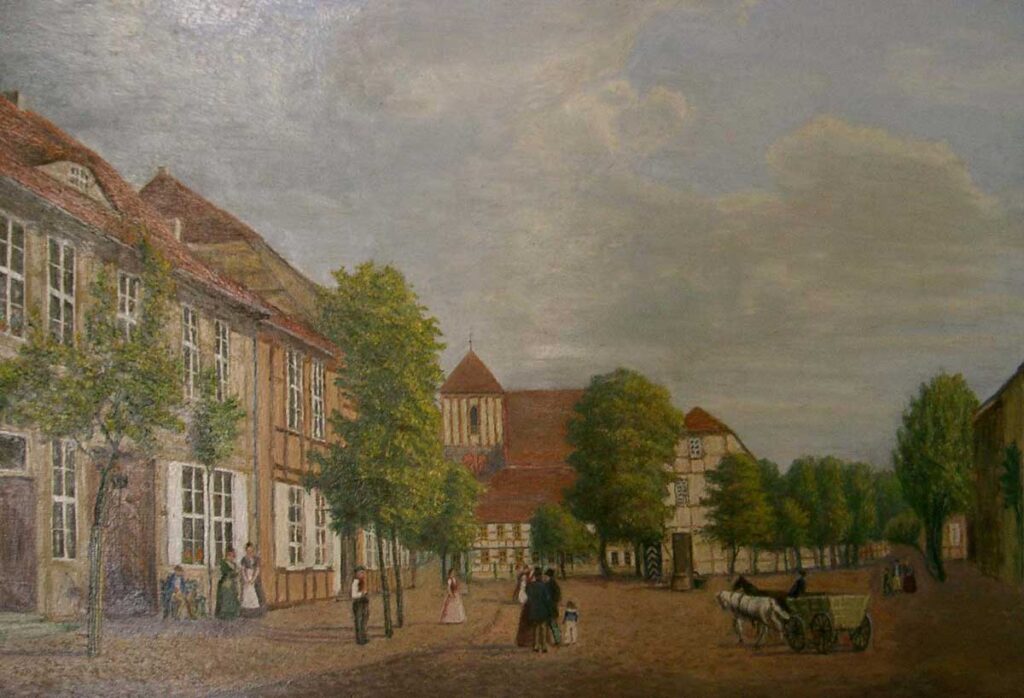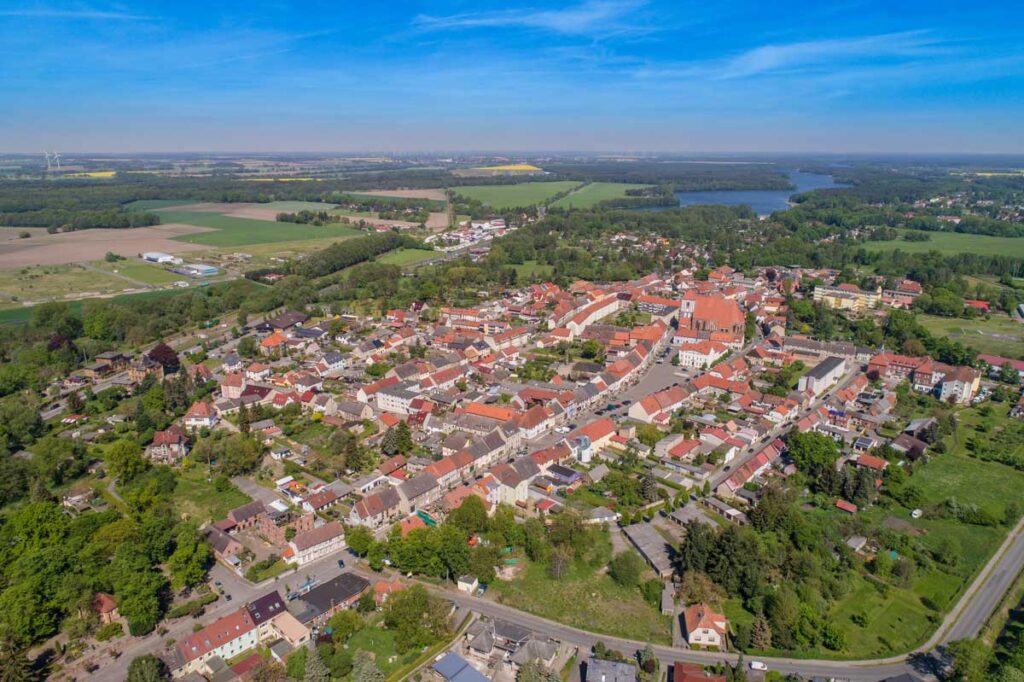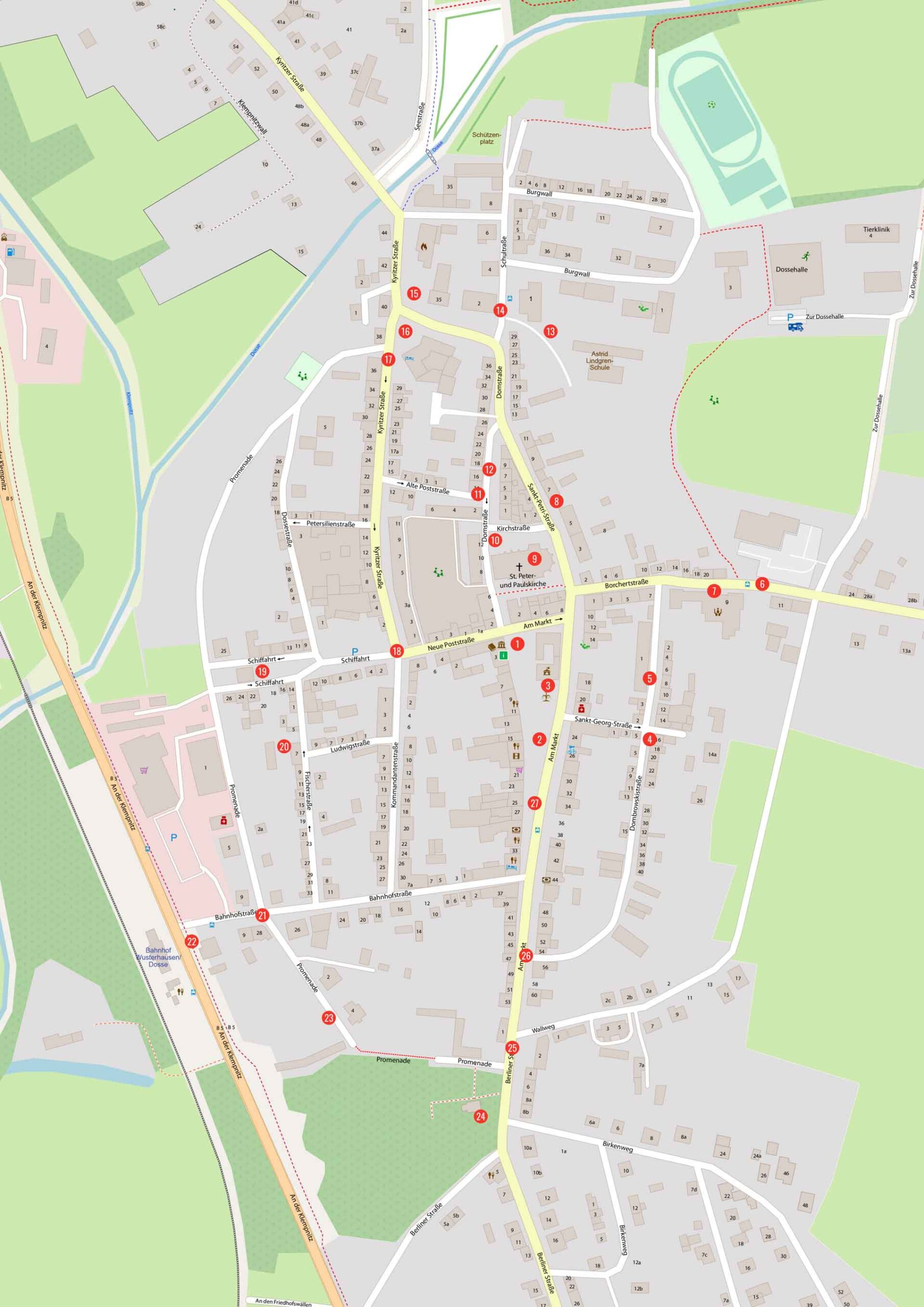The town of Wusterhausen is idyllically situated on the Klempowsee, on a dune hill in the glacial valley of the Dosse.
Important Dosse crossing at Klempowsee
Wusterhausen was on the trade route between Berlin and Hamburg and on the Baltic Sea and on the Dosse as a north-south connection to the Elbe. The road connections on land and water crossed here and offered ideal conditions for a settlement. The oldest finds in the city area date from the Stone Age.
13th - 16th centuries
Between 1232 and 1250, Wusterhausen received the Stendal town charter from the nobles of Plotho, who, however, are no longer mentioned from the end of the 13th century (probably extinct in the Manne tribe). The city was then margravial (immediate city). Because the Margrave finally gave the town to the Counts of Lindow as a fief after several fiefs starting in 1349, Wusterhausen belonged to the Ruppin dominion until 1524 (when the Counts of Lindow died out) and only then became Immediatstadt again, i.e. directly subordinate to the Margrave.
Nevertheless: heyday in the Middle Ages, not least because of the location at the crossroads between Dosse (North-South waterway) and Straße (East-West Berlin-Hamburg), salt trade privilege for the region between Dosse and Temnitz, commercial center, up to 4 bridges with the corresponding ones Customs service.
The crest
Coat of arms – on the right side is half a red Plothosche lily on a silver background, on the left is a half silver Arnstein eagle on a red background.
3 city gates
The town was built on the site of a Slavic settlement and - like all Prignitz towns - was built according to plan. The church and market with town hall, mill and Heiliggeist-Hospital are mentioned early on. City walls: erected in the 13th century. There were 3 city gates: the Kyritzer Tor, the Wildberger Tor and the Kampehler Tor. Only the remains of the brick wall with two defense towers have been preserved, the rest has been gradually demolished since the beginning of the 19th century
decline
At the latest with the devastation of the 30-year war, the city lost its importance. There were also several devastating fires, the last in 1758. Wusterhausen/Dosse became an agricultural town.
In 1758, 2/3 of the city, the entire market square and a large part of the southern city burned down, while the great fire of 1636 affected the northern part. The city archives were lost along with the medieval town hall.
garrison
Wusterhausen was a garrison town for over 100 years. From the beginning of the 18th century, two companies of the "Yellow Riders" of 100 men each were stationed here (as in almost all Prignitz towns). The soldiers received the nickname "Yellow Riders" from their lemon-yellow riding jackets. They were wiped out near Jena and Auerstedt in 1806.
In 1810, by order of the Prussian king, the civil guards were set up. They formed a kind of gendarmerie and were dissolved in the smaller towns in 1813. From 1860, a Uhlan garrison was stationed in Wusterhausen. In 1875 the last soldiers were transferred to Perleberg. This ended the history of the Wusterhausen garrison.
Important for the market: After the city fire in 1758, the market was not built on again - except for the town hall. The Yellow Riders used the free area as a parade ground (similar to Neuruppin).
When the districts were reorganized in 1812 and Kyritz became the district town of Ostprignitz, Wusterhausen remained a small town on the outskirts of the Ruppin district.
19th century
Schusterhausen - In the middle of the century, up to 98 shoemaker's workshops are said to have been located in the town. The sale of the work shoes mostly went to Berlin.
The location on the Berlin - Hamburg route was an important factor for the city. The Berlin-Hamburger Chaussee was not finished until 1830 and the mail coaches now rolled faster to Hamburg - until the railway came. The Berlin - Hamburg railway was completed in 1846, but the station was in Neustadt. In Wusterhausen there was only a connection to the railway network on the branch line in December 1886 - the city was left behind. The Neuruppin-Havelberg connection was also routed via Bückwitz and Neustadt.
The slow settlement of crafts and trades led to urban expansion on Berliner Strasse.
Around 1900 there was an upturn due to the "summer resorts" of the Berliners, especially at the lake. Already around 1900 there were the ladies' and men's bathing establishments as well as boat trips on the lake. In 1928 the new lido was built and passenger shipping developed. By the beginning of the war in 1939, the lake was being developed into a recreation area, but then this development stagnated.
DDR time
This is where Wusterhausen became the location of the district veterinary clinic, there was a large poultry slaughterhouse and the agricultural school, but otherwise: a small town in the district of Kyritz, from 1952 the court also moved to the district town, only tourism remained an important economic factor.

Oldest city view from the beginning of the 18th century, engraving by Daniel Petzold

Market square 1839, painting by Theophil Dombrowski based on a city view by Wilhelm Barth

Aerial photo 2020, photo: REG

City walk map general view
